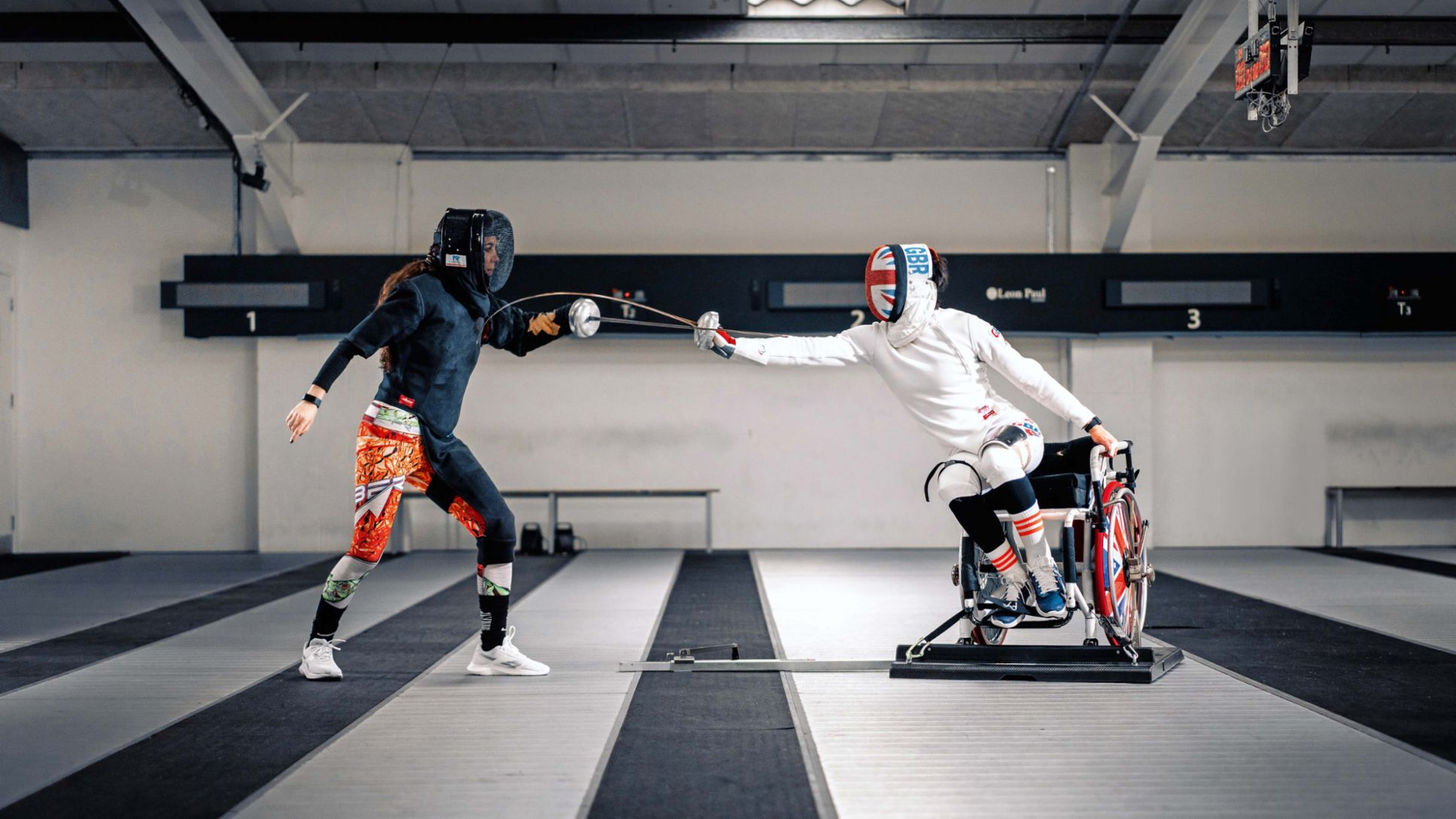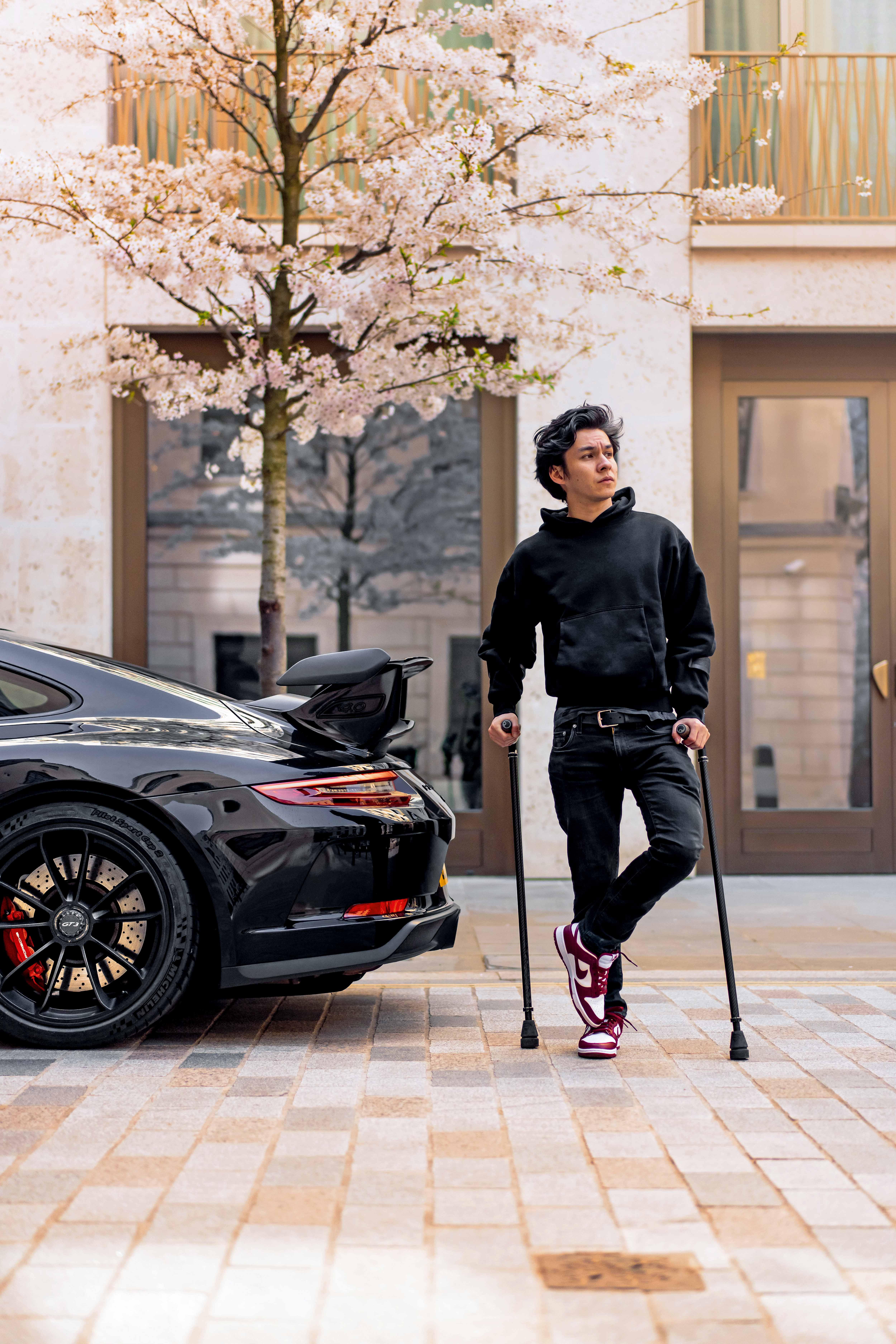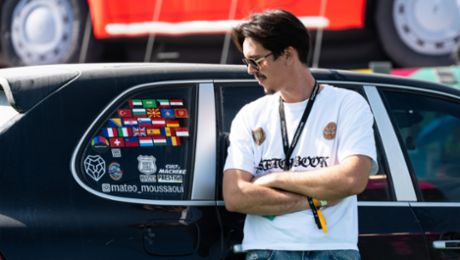With a lightning-quick swish of his steel épée sword, Oliver Lam-Watson reveals why he’s a master of his sport. A sport he likens to a cross between chess and martial arts, requiring both mental and physical agility – even more so when both competitors are duelling from wheelchairs anchored firmly to the ground.
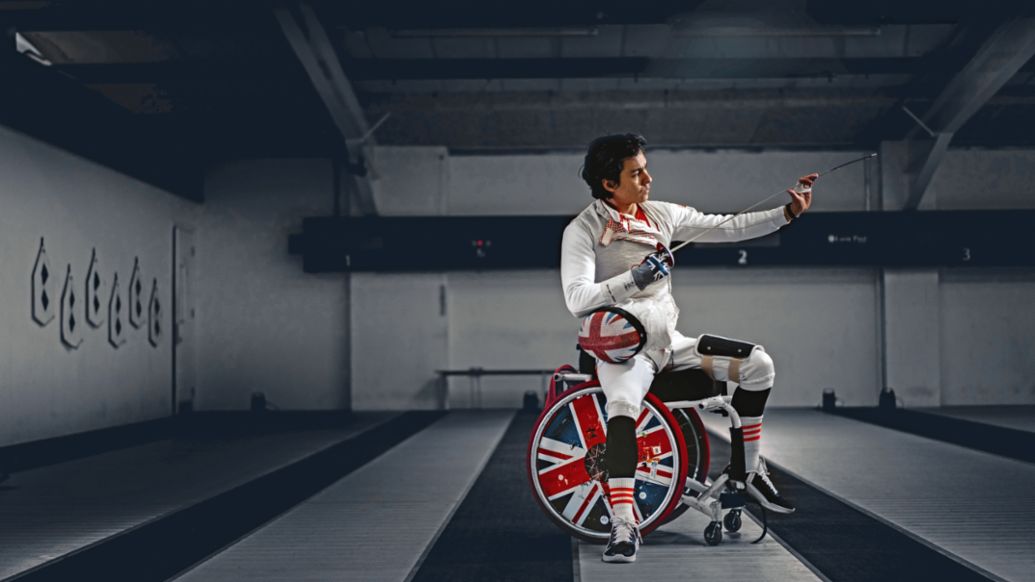
A fixture of the Paralympic Games since Rome 1960, wheelchair fencing is fast, fierce and exciting – a tactical, stylish sport with a history stretching all the way back to Medieval swordsmanship.
“At the end of the day it’s a combat sport, but people say it’s like physical chess and that’s so, so true,” says Lam-Watson, when we meet at his state-of-the-art training facility in North London. “Offensive, defensive, counter-offensive, setting intentions, distance tactics, the timing, the smoothness. They say slow is smooth and smooth is fast. It’s such an interesting sport.”
And yet, just a few years before becoming a double Paralympic medallist at Tokyo 2020, which was delayed until September 2021 due to the Coronavirus pandemic, Lam-Watson knew almost nothing about the sport he would come to love. Believe it or not, he’d never even tried it. In fact, not long ago, he wasn’t keen on sports at all.

Lam-Watson, from South London, was born with a rare condition called Klippel-Trenaunay syndrome – a vascular disorder affecting his left leg. “I grew up as a fairly average kid,” he says. “But around the age of nine, my condition worsened and I was told it was more of a disability – that’s when I went on crutches for the first time.” Doctors told him he would never be able to walk or run normally, and that the crutches would be a lifelong necessity.
“I think that was the first time I considered myself to be different,” he says. “And that’s why I hated sports in school – it was something that separated me from everyone else and highlighted my differences. But I always shied away from the idea of disability. I didn’t talk about it, and never really confronted it.”
By his early twenties, now studying architecture at university, Lam-Watson still hadn’t fully come to terms with living with a disability – telling friends that the crutches were the result of a sports injury, or some other mishap. “I was sick of it dominating my life,” he says. “I just wanted to be seen as an equal. But after a while people realised that maybe it wasn’t a skiing accident.”

It was around this time, aged 23, that Lam-Watson decided to do something about it. “I thought, if I’m going to live with this, let’s see what I’m capable of.” So he signed up to a gym, starting small, lifting weights. After a while a friend convinced him to take part in a Spartan Race, where competitors tackle a tough, military-style obstacle course. “It was kind of scary – 15 kilometers and a lot of mud and water, all on my crutches, but I completed it,” says Lam-Watson, who went on to complete six more of the events.
“I was quite pleased with myself,” he says. “But then I went to a doctor to get checked over, just to make sure I was still OK to do these races, and I remember he said to me ‘well that’s not a real sport, is it?’ I was really annoyed – I’d achieved what I felt was quite a big deal, only to be told that it wasn’t a sport.”
Determined to prove the doctor wrong, he sat down that night and began Googling paralympic sports, looking for one he could take on – and take on quickly. One stood out: wheelchair fencing. The next day, he phoned every fencing club in London. Eventually one agreed to help him, and a few days later he began his training.
“I went from never having picked up a sword to training full-time,” he says. Amazingly, just six months later he was selected for his first World Cup in Hungary, bleaching his hair Andre Agassi-style blond for the occasion. “I was a complete rookie and I got completely smashed by some of the world’s best fencers,” he says. “It was a really steep learning curve.”
Undeterred, he continued to devote himself to training. And the results soon followed – starting with individual bronze and team silver at World Cup events in 2018, followed by team bronze at the World Championships in South Korea the next year. Then came the jewels in the crown: bronze in Team Épée and silver in the Team Foil for Team GB sat the 2020 Paralympic Games in Tokyo.
“It’s no one else’s right to tell you what you can or can’t do.” Oliver Lam-Watson
It's an incredible story, and one which Lam-Watson hopes may inspire others. More than that, he hopes he can help completely reshape how people view disability, and has already established a successful online following, including a YouTube channel where he tackles many issues ranging from anxiety to amputation, as well as posting behind-the-scenes videos from the Paralympics and, more recently, clips of him doing skateboard tricks.
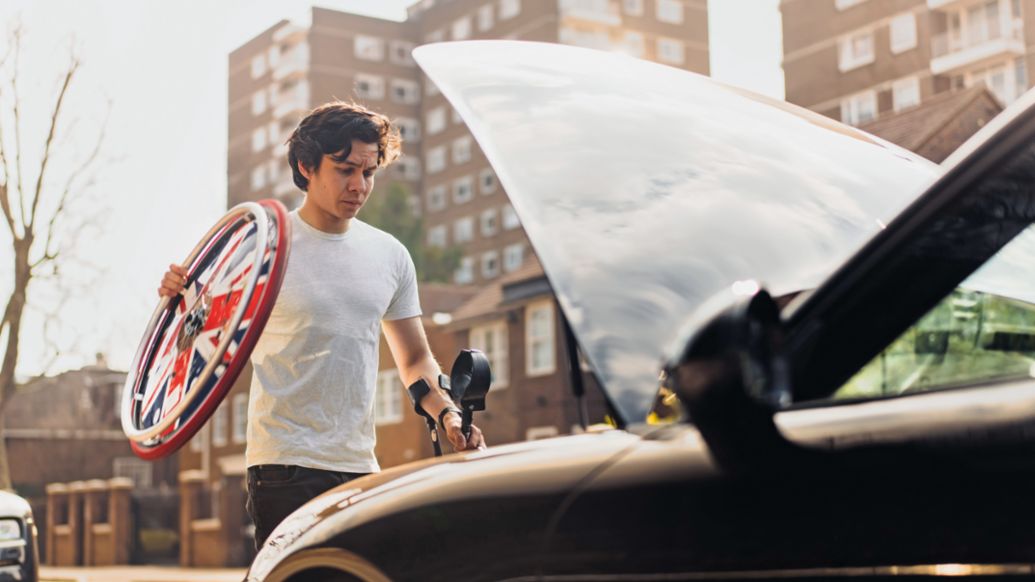
Still, Lam-Watson is no stranger to negative comments and discrimination – something he encounters both online and in real life. “The worst ones are just small comments,” he says. “People say ‘Oh, you can't do that because you’re disabled,’ or ‘Since when do people with disabilities go the gym?’ Unfortunately, they often use worse words than that – to my face, and online.
“The problem with disability is that people make assumptions about what you can’t do, rather than what you can do,” he says. “They see someone who’s unable to do things for themselves. I want to destroy that stereotype. I’m not saying that everything's possible. I’m being realistic. But it's no one else’s right to tell you what you can and can’t do – it’s for you to find out.”
Breaking down barriers and change perceptions
For Lam-Watson, this is especially true when it comes to cars and driving. For the last two years his daily driver has been a 911 GT3 Clubsport – something, he says, that surprises a lot of people. Especially when they see him parking in a disabled bay, or displaying his blue disabled parking pass in the windscreen (another popular topic of conversation on his YouTube channel).
“It just shows that disabled people can aspire to having a nice car,” he says. “I can drive an automatic car – so my GT3 has a PDK gearbox. But you can also have a sports car fitted car with hand controls.”
As we drive through London, Lam-Watson is in his element at the wheel. “There are two reasons why I really love my GT3. One is the mobility and freedom it gives me. The other is the ability to do things I can’t always do with my own body – to go fast, to be nimble and agile. It feels like an extension of me. And in the car, I don’t have to use my crutches to be on the same level as everyone else.”
We park on the street outside his flat. “I don’t keep it in a garage,” he says. “Sometimes it gets dirty or picks up stone chips. But I want to use it properly – I’m a big believer that things are tools to help me in life, and for me the GT3 is the perfect tool. It’s functional but thrilling, and it’s not trying to be anything that it’s not.”
At just 29 years old, Lam-Watson has achieved more than many people may hope to accomplish in a lifetime. He’s a qualified architect, a double Paralympic medalist, a leading advocate of disabled rights and a popular YouTuber. So what’s next on his bucket list? “I don't like to plan too much for the future because it takes me out of the moment,” he says. “My attitude is if you want to do something in five years’ time, why not just do it now?”
But does he think the world can change as quickly as he’d like it to? “If I can do meaningful things,” he says, “and create meaningful content – whether it’s videos or photos or even things like my recent TEDx talk – then maybe I can start to change the way some people think. Then we’re all moving forward and I’ll be happy.”
